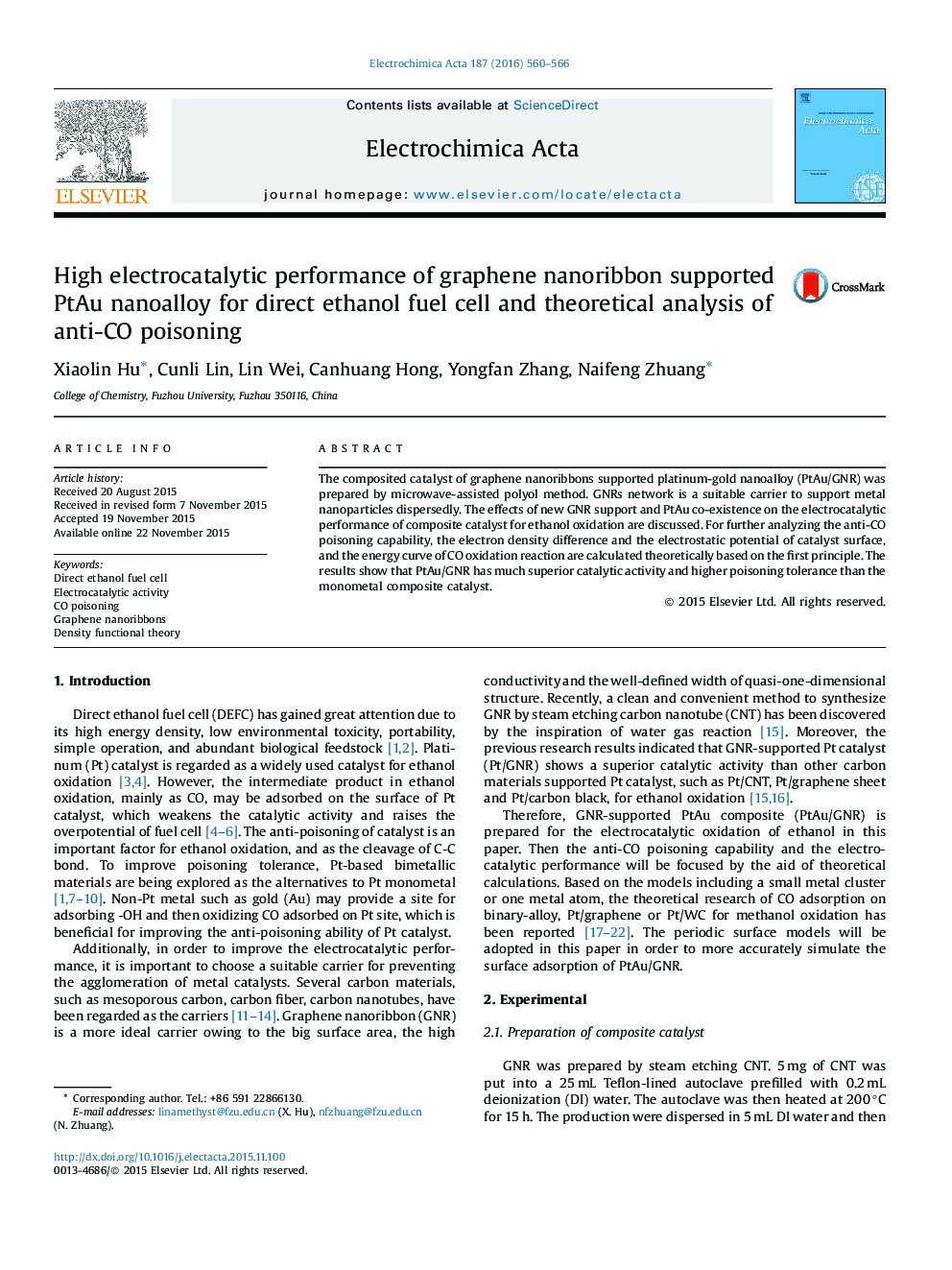| Article ID | Journal | Published Year | Pages | File Type |
|---|---|---|---|---|
| 183303 | Electrochimica Acta | 2016 | 7 Pages |
•GNR network is a suitable carrier for supporting alloy nanoparticles dispersedly.•PtAu/GNR has superior catalytic activity for ethanol oxidation.•Anti-CO poisoning capability is analyzed successfully by DFT simulation.•Carbon material support and PtAu co-existence enhance anti-CO poisoning capability.
The composited catalyst of graphene nanoribbons supported platinum-gold nanoalloy (PtAu/GNR) was prepared by microwave-assisted polyol method. GNRs network is a suitable carrier to support metal nanoparticles dispersedly. The effects of new GNR support and PtAu co-existence on the electrocatalytic performance of composite catalyst for ethanol oxidation are discussed. For further analyzing the anti-CO poisoning capability, the electron density difference and the electrostatic potential of catalyst surface, and the energy curve of CO oxidation reaction are calculated theoretically based on the first principle. The results show that PtAu/GNR has much superior catalytic activity and higher poisoning tolerance than the monometal composite catalyst.
Graphical abstractGraphene nanoribbon network is a suitable carrier for supporting PtAu nanoalloy particles dispersedly. PtAu/GNR composite has a high catalytic activity for ethanol oxidation. Density functional theory simulation shows carbon material support and PtAu co-existence can enhance anti-CO poisoning capability. First principle theoretical study provides a way to find and develop better electrocatalysts.Figure optionsDownload full-size imageDownload as PowerPoint slide
